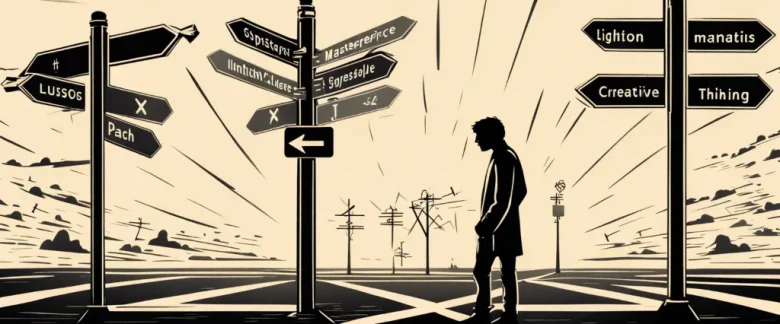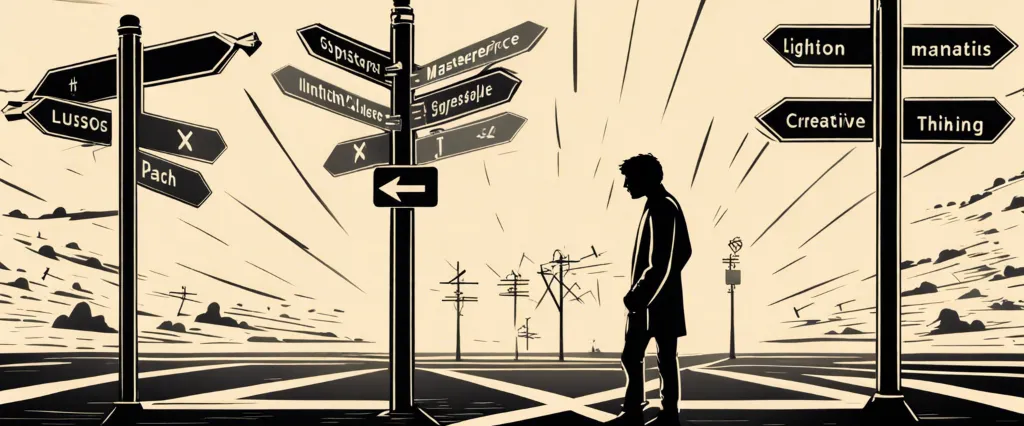In “Tribes,” Seth Godin explores the power of leadership and community-building in an increasingly connected world. With the rise of the internet and social media, Godin argues that traditional hierarchical structures are being revolutionized, making way for self-organized tribes. These tribes, whether formed around a shared interest, cause, or industry, have the potential to bring about change and create meaningful connections like never before. As a renowned entrepreneur, author, and marketing guru, Seth Godin sheds light on the significance of leadership in fostering and mobilizing these tribes, urging readers to embrace their unique voices and become catalysts for change.
Chapter 1: We Need Tribes – Exploring the importance of tribes in today’s society.
Chapter 1 of “Tribes” by Seth Godin explores the significance of tribes in today’s society and emphasizes the need for their existence. The chapter delves into the changing dynamics of leadership and how tribes play a crucial role in shaping communities and driving change.
Godin notes that in this digital age, the traditional model of leadership has been disrupted. No longer do leaders control people through authority and hierarchy. Instead, leadership is now about finding and leading tribes, groups of like-minded individuals who share a common goal or interest. These tribes are no longer confined to specific physical locations but can be found globally online.
The author argues that tribes are essential because they bring people together, foster connections, and create a sense of belonging. They enable individuals to find their voice, be heard, and make a difference. Moreover, tribes have the potential to challenge the status quo, initiate change, and drive progress.
Godin believes that everyone has the ability to lead a tribe, and in doing so, they can make a positive impact on society. He suggests that leaders should not be afraid to stand out, take risks, and embrace their unique perspectives. By doing this, they can gather like-minded individuals around a shared purpose, inspire them, and ultimately create a tribe.
In conclusion, Chapter 1 of “Tribes” highlights the crucial role tribes play in today’s society. They bring people together, foster connections, and enable individuals to make a difference. By embracing their unique perspectives and leading tribes, individuals can initiate change and create a positive impact in their communities and beyond.
Chapter 2: The Power of Leadership – Discussing the role of leaders in uniting and inspiring tribes.
Chapter 2 of the book “Tribes” by Seth Godin, titled “The Power of Leadership”, delves into the significance of leaders in uniting and inspiring tribes. Godin emphasizes that leaders play a crucial role in leading and influencing a group towards a common purpose.
Godin defines a tribe as a group of people connected by a shared interest, goal, or passion. However, a tribe cannot function effectively without a leader. Leaders are accountable for creating a vision and rallying the tribe members around it. They possess the ability to identify and articulate their ideas, which sets them apart from the rest. A leader must be willing to challenge the status quo, take risks, and initiate change.
Leadership is not limited to individuals in formal positions of authority; it can arise from anyone within the tribe. Godin highlights that leaders do not need to have official titles but must possess the willingness to step up and make a difference.
Leadership revolves around initiating movement and inspiring the tribe. Godin argues that leaders need to create change by challenging the existing systems and norms, rather than maintain the status quo. Leaders who can communicate effectively are more likely to attract followers and build a successful tribe.
In summary, Chapter 2 of “Tribes” emphasizes the indispensable role of leaders in uniting and inspiring tribes. Leaders are responsible for creating a vision, challenging the status quo, and initiating change. Through effective communication, they inspire others to rally behind their ideas. Ultimately, leaders hold the power to transform a group of individuals into a powerful tribe with a shared purpose.
Chapter 3: Creating a Movement – Examining how to create a movement and rally people around a common cause.
Chapter 3 of the book Tribes by Seth Godin is titled “Creating a Movement – Examining how to create a movement and rally people around a common cause.” In this chapter, Godin explores the key elements required to build a successful movement.
Godin begins by emphasizing the importance of a strong leader for a movement. The leader should possess a clear vision and the ability to communicate it effectively. They need to be passionate, willing to take risks, and have the charisma to inspire others to join their cause. A leader must also embrace vulnerability, as it is this authenticity that attracts followers and builds trust.
Furthermore, Godin stresses the significance of having a cause that people can align themselves with. A movement must stand for something that resonates with a specific group of individuals. It should be unique, meaningful, and have the power to challenge the status quo.
To create a movement, Godin also emphasizes the importance of building a connected community. The leader must be able to effectively communicate with their followers, provide a platform for them to connect, and facilitate interactions between members. By fostering a sense of belonging and encouraging collaboration, a movement gains momentum and becomes self-sustaining.
Godin highlights the role of tribes in a movement, as tribes consist of groups of people who share a common interest or goal. Leaders must recognize the tribe’s needs, provide value, and create a space where the tribe members can engage and grow together. Ultimately, a movement flourishes when the tribe members become leaders themselves and contribute to its expansion.
In this chapter, Seth Godin provides valuable insights into the essential components required to create a movement. He emphasizes the significance of strong leadership, a compelling cause, community building, and nurturing tribes. By understanding and implementing these concepts, anyone can learn to create and lead a successful movement.
Chapter 4: The Tribe’s Culture – Highlighting the significance of a tribe’s culture in shaping its identity.

Chapter 4 of the book “Tribes” by Seth Godin focuses on the importance of a tribe’s culture in shaping its identity and influencing its members’ behavior and actions. The chapter emphasizes that a tribe’s culture plays a crucial role in building a strong sense of community and alignment, which ultimately leads to the tribe’s success.
Godin highlights that culture is not simply about sharing customs and traditions, but it encompasses deeper values, beliefs, and behaviors that unite the tribe’s members. It is the shared understanding of what is important, how to act, and the norms that guide their interactions. A strong culture helps create a common purpose and enables members to feel a sense of belonging and commitment to the tribe.
Furthermore, culture plays a role in how tribes adapt and respond to change. Godin suggests that a tribe’s culture should be open to evolution and be willing to challenge existing norms when necessary. A stagnant culture can hinder progress and prevent the tribe from embracing new ideas or directions.
The author also emphasizes that the leader’s role is crucial in shaping and maintaining a strong culture within the tribe. The leader needs to embody and promote the values and beliefs that are important to the tribe. They must consistently communicate and reinforce the tribal culture, ensuring that all members are aligned and working towards the same vision.
In conclusion, Chapter 4 highlights the significance of a tribe’s culture in shaping its identity. A strong culture helps build a sense of community, aligns the actions of its members, and enables the tribe to evolve and adapt to changing circumstances. The leader has a vital role in nurturing and promoting the tribal culture, ensuring its longevity and success.
Chapter 5: Connection and Communication – Emphasizing the importance of connecting and communicating with tribe members.
Chapter 5 of “Tribes” by Seth Godin emphasizes the significance of forging connections and effective communication within a tribe. The chapter argues that a tribe cannot survive without these essential elements and stresses the role of the tribe leader in facilitating them.
Godin asserts that human beings have an innate desire to belong and be part of a community, and tribe members seek connections with like-minded individuals who share their beliefs and values. These connections foster loyalty, trust, and commitment within the tribe, ultimately leading to its success. The tribe leader plays a vital role in creating an environment that encourages and enables these connections to flourish.
Effective communication is crucial in shaping the direction and unity of a tribe. The chapter explains that a tribe leader must communicate constantly to share the tribe’s vision, values, and goals, ensuring that the entire tribe is aligned and working towards a common objective. Communication provides information, motivation, and inspiration, building a sense of purpose and commitment among tribe members.
Godin also emphasizes that communication should not simply be a one-way street. Leaders must actively listen to feedback, concerns, and ideas from tribe members, fostering an open dialogue where everyone feels heard and valued. This two-way communication builds trust and empowers tribe members, encouraging them to actively contribute and take ownership of the tribe’s success.
Overall, this chapter highlights the undeniable importance of connection and communication within tribes. By facilitating connections, establishing effective communication channels, and creating an environment that encourages participation, tribe leaders can foster a strong, united community that can overcome challenges and achieve their shared goals.
Chapter 6: Embracing Change – Discussing the need for tribes to adapt and embrace change to stay relevant.
Chapter 6 of the book “Tribes” by Seth Godin emphasizes the importance of embracing change for tribes in order to stay relevant. The author begins by highlighting that change is inevitable and constant in society, and tribes that refuse to adapt are likely to become stagnant or even extinct.
Godin explains that tribes need to become comfortable with change and innovation, as it is through these processes that they can grow and remain influential. He states that change can be uncomfortable and disruptive, but it is essential for the tribe’s survival. Furthermore, he argues that a tribe that can effectively navigate change can create a significant impact in its industry or community.
The author discusses how leaders play a crucial role in guiding their tribes through change. Good leaders must be open to new ideas and encourage their tribe members to be adaptable. Moreover, they should encourage a culture of experimentation and learning, emphasizing that failure is a necessary part of growth.
Godin emphasizes the importance of transparency and communication within a tribe during times of change. Leaders must be honest about the need for change and clearly articulate the vision and purpose behind it. By involving tribe members in the decision-making process, leaders can increase engagement and loyalty, as well as foster a sense of ownership among the members.
In conclusion, Chapter 6 of “Tribes” underscores that tribes must be willing to embrace change and adapt to stay relevant. Leaders play a crucial role in guiding their tribes through change, and transparency and communication are essential for success. By embracing change and innovation, tribes can continue to have an impact and thrive in a changing world.
Chapter 7: Overcoming Resistance – Exploring strategies to overcome resistance and challenges within a tribe.
Chapter 7 of Seth Godin’s book “Tribes” focuses on strategies to overcome resistance and challenges within a tribe. The chapter emphasizes that resistance is a natural response when change is proposed, and successful tribe leaders understand how to address and overcome resistance effectively.
Godin suggests that one way to overcome resistance is to identify and engage with the “sneezers” within the tribe. Sneezers are influential people who can spread ideas and change rapidly. By gaining the support of these key individuals, their enthusiasm can infect others in the tribe, reducing resistance and promoting acceptance of new ideas.
Another strategy is to tell stories that connect with the tribe’s emotions and values. People are more likely to overcome resistance when they can see themselves and their values reflected in the proposed change. By using storytelling, tribe leaders can effectively communicate the benefits and values of change, making it easier for the tribe to adopt new ideas.
Additionally, Godin encourages leaders to focus on creating a culture of innovation and encourage diversity of thought within the tribe. By welcoming different ideas and perspectives, leaders can challenge resistance and create an environment where change is embraced rather than resisted.
Furthermore, Godin advises tribe leaders to embrace conflicts as opportunities for growth and improvement. By addressing conflicts openly and resolving them constructively, leaders can remove barriers to change and ensure that resistance is managed effectively.
In summary, chapter 7 of “Tribes” explores several strategies to overcome resistance within a tribe. By engaging with influential individuals, using storytelling, fostering a culture of innovation, and embracing conflicts, leaders can navigate resistance and successfully drive change within their tribes.

Chapter 8: The Future of Tribes – Speculating on the future of tribes and their potential impact on society.
Chapter 8 of “Tribes” by Seth Godin discusses the future of tribes and their potential impact on society. The chapter explores the concept of the tribe as a powerful force that can bring about significant changes in the world.
Godin begins by explaining that tribes thrive in times of change and uncertainty. As the world becomes increasingly interconnected and technology continues to evolve, the ability for individuals to form and lead tribes becomes more accessible. This creates new opportunities for people to come together, share ideas, and drive positive change.
The author suggests that tribes have the potential to fill the gaps left by traditional institutions. He argues that the future of tribes lies in their ability to leverage the power of connection and collaboration to solve complex problems and address societal challenges. Godin believes that tribes can disrupt the status quo, challenge outdated systems, and ultimately create a more inclusive and sustainable world.
Furthermore, Godin emphasizes the importance of leadership in tribes. He notes that leadership is a choice and that anyone can step up to lead a tribe. Effective leaders in tribes are those who can inspire, empower, and unite their members towards a common goal. They embrace vulnerability, encourage creativity, and create an environment that fosters trust and innovation.
In conclusion, Chapter 8 envisions a future where tribes continue to grow in importance and influence. By embracing change, leveraging their collective power, and embracing effective leadership, tribes have the potential to shape a vibrant and prosperous society, bringing about positive transformation in various areas of life.
After Reading
In conclusion, “Tribes” by Seth Godin offers a fresh perspective on leadership and community building in the digital age. Through insightful anecdotes and thought-provoking analysis, Godin emphasizes the importance of finding and leading like-minded individuals to create a tribe, a loyal community centered around a shared vision or interest. He emphasizes that anyone can be a leader, and encourages readers to step up and take charge in order to bring about positive change. By embracing the power of the internet and leveraging social media platforms, individuals can connect with their tribe and create a movement that can transform industries and society as a whole. Overall, “Tribes” presents a compelling argument for the need to build tribes that defy the status quo and inspire others to do the same.
1. “The Power of Community: How Online Crowdsourcing is Changing the World” by Howard Rheingold – This book delves into the concept of community building through online platforms, exploring how the internet has connected like-minded individuals and empowered them to drive change.
2. Start with Why: How Great Leaders Inspire Everyone to Take Action” by Simon Sinek – Just like “Tribes,” this book explores the power of leadership and inspiration. Sinek emphasizes the importance of understanding the purpose and mission behind any endeavor, and how it can mobilize a community.
3. Quiet: The Power of Introverts in a World That Can’t Stop Talking” by Susan Cain – This book examines the impact of introverts in society, highlighting the strengths and unique contributions they bring. It explores how introverts, who often operate differently than extroverts, can revolutionize traditional ideas of leadership and community-building.
4. “The Art of Community: Seven Principles for Belonging” by Charles Vogl – From business to activism, “The Art of Community” provides valuable insights into building meaningful communities. The book introduces seven key principles that can be applied in various contexts to cultivate strong and engaged communities.
5. The Tipping Point: How Little Things Can Make a Big Difference” by Malcolm Gladwell – In this well-known book, Gladwell explores the concept of societal change through the lens of “tipping points.” He examines how small actions and catalysts can create significant shifts in social behavior, uncovering insights relevant to the formation and growth of tribes.




